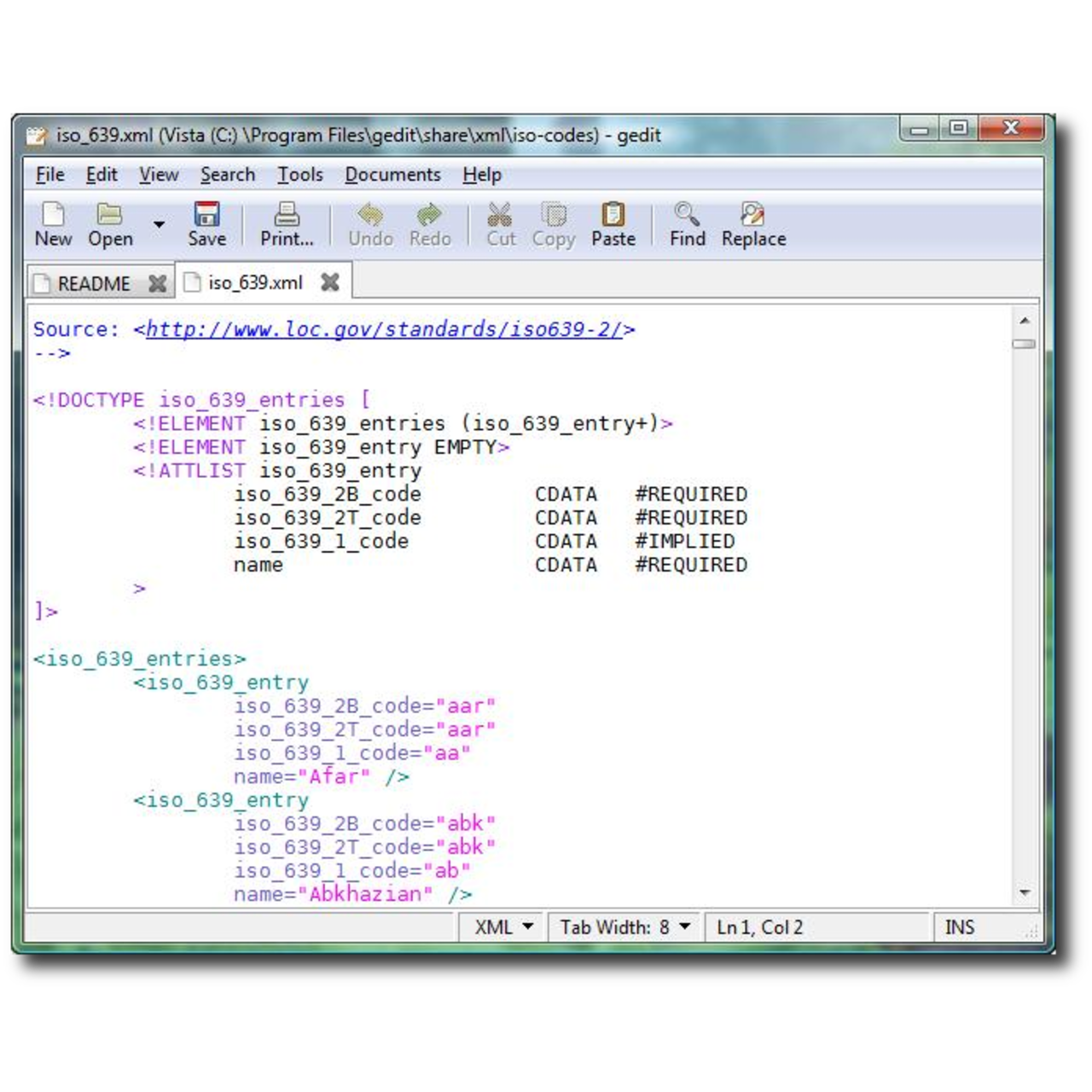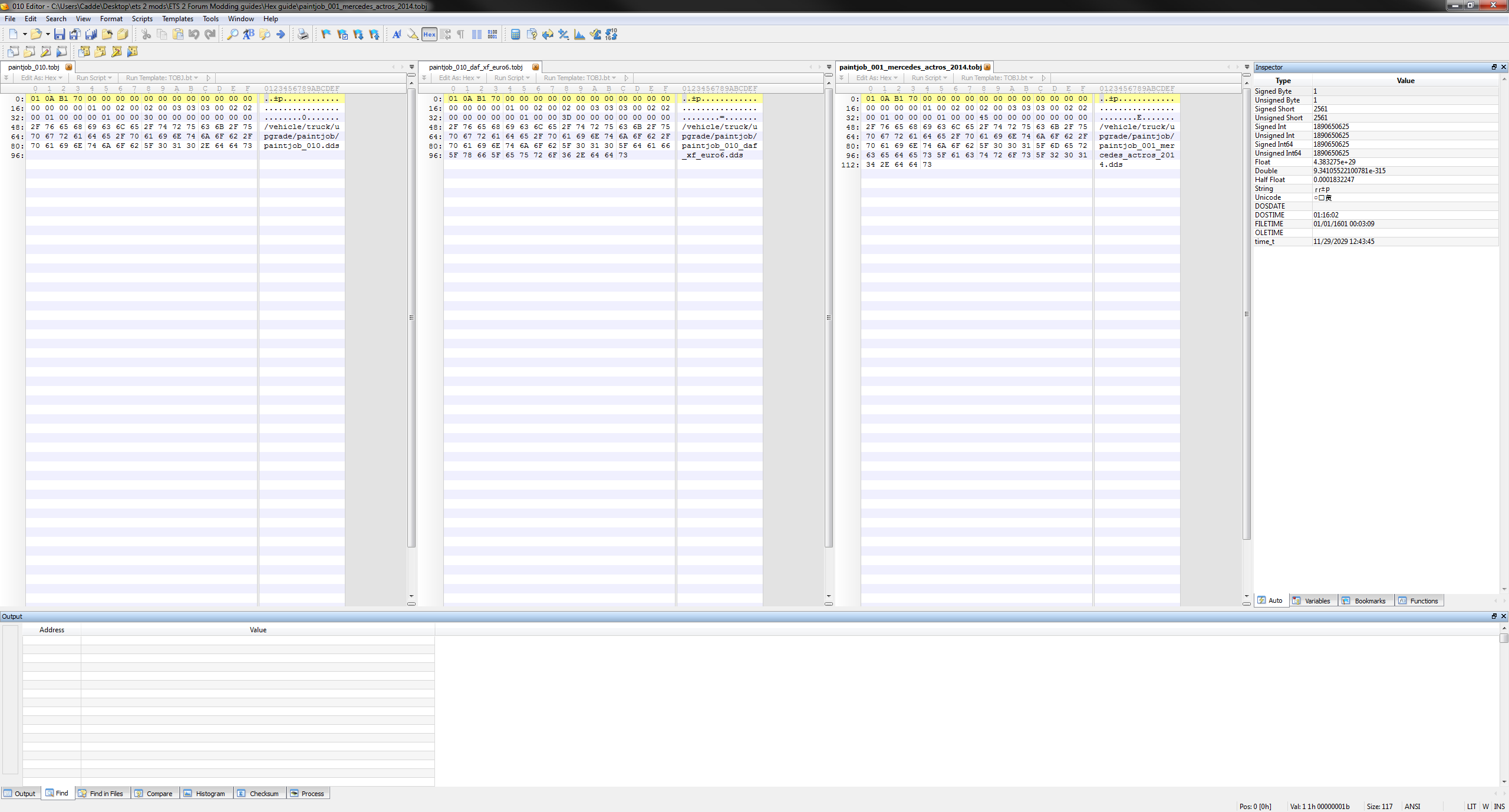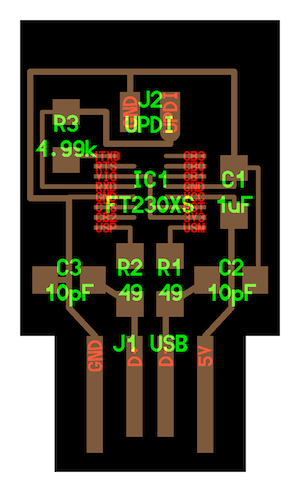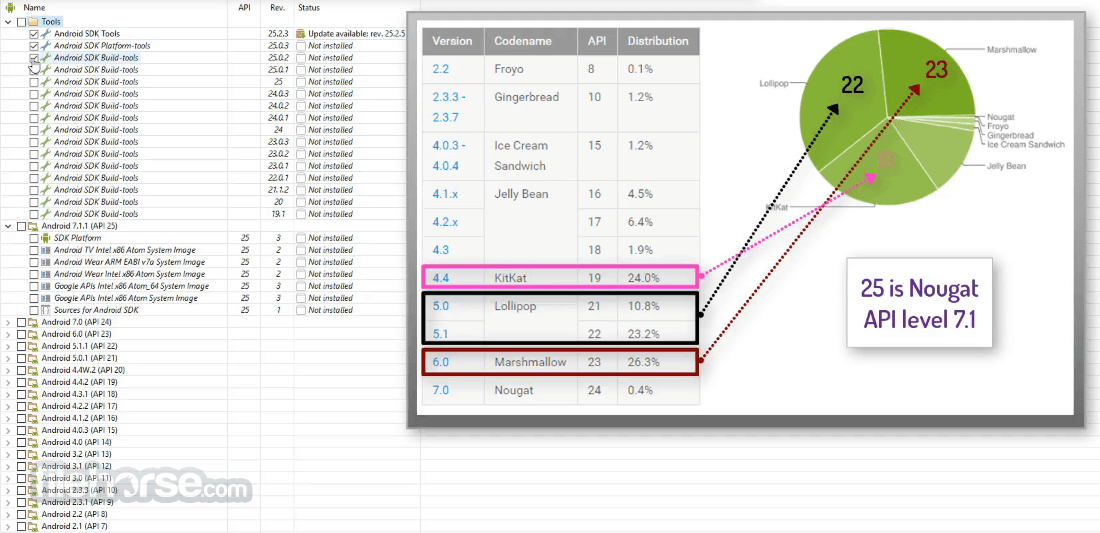
Teletype for Atom
Embarcadero Dev-C is a new and improved fork (sponsored by Embarcadero) of Bloodshed Dev-C and Orwell Dev-C. It is a full-featured Integrated Development Environment (IDE) and code editor for the C / C programming language. Jan 07, 2018 Embarcadero Dev-C is a new and improved fork (sponsored by Embarcadero) of Bloodshed Dev-C and Orwell Dev-C. It is a full-featured Integrated Development Environment (IDE) and code editor for the C/C programming language. It uses Mingw port of GCC (GNU Compiler Collection) as its. A hexadecimal color is specified with: #RRGGBB. RR (red), GG (green) and BB (blue) are hexadecimal integers between 00 and FF specifying the intensity of the color. For example, #0000FF is displayed as blue, because the blue component is set to its highest value (FF) and the others are set to 00.
Great things happen when developers work together—from teaching and sharing knowledge to building better software. Teletype for Atom makes collaborating on code just as easy as it is to code alone, right from your editor.
- Batch Hex Editor lets you replace, insert, delete, and edit bytes in thousands of files using conditional processing. With Batch Hex Editor, you'll be able to perform bitwise operations using bitmasks and logical operators, compute hashes, reverse bytes and bits, and convert to and from bin-hex and base-64 quickly and easily.
- I need suggestions for the best Hex Editor software? This thread is locked. You can follow the question or vote as helpful, but you cannot reply to this thread.
Share your workspace and edit code together in real time. To start collaborating, open Teletype in Atom and install the package.
GitHub for Atom
A text editor is at the core of a developer's toolbox, but it doesn't usually work alone. Work with Git and GitHub directly from Atom with the GitHub package.
Create new branches, stage and commit, push and pull, resolve merge conflicts, view pull requests and more—all from within your editor. The GitHub package is already bundled with Atom, so you're ready to go!
Everything you would expect
Cross-platform editing
Atom works across operating systems. Use it on OS X, Windows, or Linux.
Built-in package manager
Search for and install new packages or create your own right from Atom.
Smart autocompletion

Atom helps you write code faster with a smart and flexible autocomplete.
File system browser
Easily browse and open a single file, a whole project, or multiple projects in one window.
Multiple panes
Split your Atom interface into multiple panes to compare and edit code across files.
Find and replace
Find, preview, and replace text as you type in a file or across all your projects.
Make it your editor
Packages
Choose from thousands of open source packages that add new features and functionality to Atom, or build a package from scratch and publish it for everyone else to use.
Themes
Atom comes pre-installed with four UI and eight syntax themes in both dark and light colors. Can't find what you're looking for? Install themes created by the Atom community or create your own.
Customization
It's easy to customize and style Atom. Tweak the look and feel of your UI with CSS/Less, and add major features with HTML and JavaScript.
See how to set up Atom
Under the hood
Atom is a desktop application built with HTML, JavaScript, CSS, and Node.js integration. It runs on Electron, a framework for building cross platform apps using web technologies.
Open source
Atom is open source. Be part of the Atom community or help improve your favorite text editor.
Dev C 2b 2b Hex Editor Online
Keep in touch
| GitHub | github.com/atom |
| @AtomEditor | |
| Chat | Slack |
| Forum | Discuss |
| Stuff | Atom Gear |
| RSS Feed | Packages & Themes |

TL;DR
- Simple binary patching and experimentation can be done with
wxHexEditor. - Erlang and Elixir are the only general-purpose programming languages that allow for binary pattern-matching, and should be used for functional and declarative binary editing.
- GNU poke is a domain-specific language for 'poking at binaries'. Different binary units (bits, bytes, uints, ints, structs) are supported natively and a genius mapping operator removes a lot of boilerplate when it comes to reading data into semantic structures and writing data out to memory or files.
There are different ways to structure data within a file.In the age of web, the most prominent one is JSON, followed by middle-aged XML and configuration-oriented YAML.Human-readable ways to structure data, however, are just one side of the spectrum.The other side is pure binary data mapped to some data structures to be computer-readable.Features like bit fields in C enable humans to define such mappings, but they also serve as a way to decode said structures.Wiki example, when compiled and disassembled doesn't mention BoxProps at all.Only when we add a function like the one below is included in the source code, would compiler spare some instructions to figure out where to get desired bits from.
Packing bits into structures warrants a whole separate post, but it's worth mentioning that bitfields is a controversial feature of C99 and many C developers suggest not using it in favor of using bitmaps and manually written packing / unpacking functions.One of the reasons for it is that it's not defined how the compiler packs bitfields, which means in practice, that some compilers reorder under-octet bitfields for the sake of optimisations.
Traditionally, non-human readable data is explored using hexdump or, less commonly xxd to print as binary instead of hex.Finally, there is od which defaults to decimal representation.But what if we need to edit it slightly for experimentation, error correction or binary carving?There is no single traditional tool for binary editing, but there's a range of tools, collectively called hex editors.
Shortcomings of hex editors
Sadly, most of readily available hex editors have two major shortcomings:
Dev C 2b 2b Hex Editor Software
- They only work on bytes
- They rarely handle huge binary files in a responsive way
- Some of hex editors have stability issues, i.e. they crash a lot
The worst offenders for crashes are ghex and bless, with latter barely working at all.Which is funny, because these two editors are frequently suggested as the best out there.
Due to these circumstances, it's wise to stick to wxHexEditor for very basic inspection/interaction and neglect hex editors altogether when it comes to advanced processing.
Hands on!
Let's say we want to extract 7-bit ASCII from this file.To do this we need to take the last bit of every byte and shove it in the back of this binary.Here is a single-take attempt to do it with a hex editor:
Even if one knows what to do, it's less than trivial to not screw it up, especially while trying to save time on insertions of zeros.However, a hex editor is a great instrument to quickly validate that the method works and move on to more automated tools.
Binary processing with Erlang
My favorite tool to do binary processing with is Erlang.It has a minimalist Prolog-like syntax, but most importantly, native support to work with binaries, bitstrings, including binary pattern matching (see 'Examples' subsection).
To do with Erlang what we failed to do with hex editor, we will write the following program, following our hex editor attempt:

We call seven-bit clusters 'Hosts', and the appended bits, that we need to send to the back 'Guests'.
Here we use standard recursion with accumulator, which in our case is a tuple of Hosts and Guests.We bind current values of accumulator in (A) and update them in (B) and (C)/(D).
In (E), we match first byte of challenge with variables A (7 bits), and G (1 bit), and the rest of challenge gets matched with variable Rest.As you can see, in this context X:N syntax means 'match N bits of some binary value with variable X'.As opposed to a similar syntax you can see in (B) and (C), where syntax 0:1 means 'span decimal value 0 over 1 bits'.We specify that Rest variable is binary, not bitstring, to make sure it's byte-aligned.If it was bitstring, it would mean that it may be any amount of bits large, even seven or one.
Hosts update happens in (B) is that we take seven bits, pad it with a single 0 on the left and shove into the end of the first element of accumulator.
Case statement in (F) checks if Guests accumulator variable is byte-aligned (its bit size is divisible by eight) or not.If it is, next iteration of Guests accumulator will be padded with a 0-bit, as seen in (C).If it isn't we just append the 'guest bit' to Guests accumulator verbatim, as seen in (D).
Finally, in (A), when the remaining set of bits is empty, we return concatenation of the two accumulator variables.
When we run it, we get the hidden message!
At the time of publishing of this post I thought that there is no way to express binary literals in Erlang, like in Python 0b101 5.However, as Reddit user Gwaerondor pointed out, it's possible with Radix#-syntax: 2#101 5.
GNU poke
In 2017, thirty one years after Erlang's initial prototype, a tool whose sole purpose is working with structured binary data was conceived.It's called GNU poke, and its v1 got released just several days ago.Let's see how to use it for the same transformation:
One of the biggest powers of GNU poke is that you can define a structure and map it to some data in one swift motion with 'map' operator @:
I[] @ 0#B means 'map the contents of currently loaded IO space onto array of Is'.Now let's see how to write the solve script.
An interesting part of this function is (A), it uses binary concatenation operator :::. It can concatenate heterogenous binary data types like a bit and a 7-bit blob.
Dev C++ Hex Editor Windows 10

Teletype for Atom
Embarcadero Dev-C is a new and improved fork (sponsored by Embarcadero) of Bloodshed Dev-C and Orwell Dev-C. It is a full-featured Integrated Development Environment (IDE) and code editor for the C / C programming language. Jan 07, 2018 Embarcadero Dev-C is a new and improved fork (sponsored by Embarcadero) of Bloodshed Dev-C and Orwell Dev-C. It is a full-featured Integrated Development Environment (IDE) and code editor for the C/C programming language. It uses Mingw port of GCC (GNU Compiler Collection) as its. A hexadecimal color is specified with: #RRGGBB. RR (red), GG (green) and BB (blue) are hexadecimal integers between 00 and FF specifying the intensity of the color. For example, #0000FF is displayed as blue, because the blue component is set to its highest value (FF) and the others are set to 00.
Great things happen when developers work together—from teaching and sharing knowledge to building better software. Teletype for Atom makes collaborating on code just as easy as it is to code alone, right from your editor.
- Batch Hex Editor lets you replace, insert, delete, and edit bytes in thousands of files using conditional processing. With Batch Hex Editor, you'll be able to perform bitwise operations using bitmasks and logical operators, compute hashes, reverse bytes and bits, and convert to and from bin-hex and base-64 quickly and easily.
- I need suggestions for the best Hex Editor software? This thread is locked. You can follow the question or vote as helpful, but you cannot reply to this thread.
Share your workspace and edit code together in real time. To start collaborating, open Teletype in Atom and install the package.
GitHub for Atom
A text editor is at the core of a developer's toolbox, but it doesn't usually work alone. Work with Git and GitHub directly from Atom with the GitHub package.
Create new branches, stage and commit, push and pull, resolve merge conflicts, view pull requests and more—all from within your editor. The GitHub package is already bundled with Atom, so you're ready to go!
Everything you would expect
Cross-platform editing
Atom works across operating systems. Use it on OS X, Windows, or Linux.
Built-in package manager
Search for and install new packages or create your own right from Atom.
Smart autocompletion
Atom helps you write code faster with a smart and flexible autocomplete.
File system browser
Easily browse and open a single file, a whole project, or multiple projects in one window.
Multiple panes
Split your Atom interface into multiple panes to compare and edit code across files.
Find and replace
Find, preview, and replace text as you type in a file or across all your projects.
Make it your editor
Packages
Choose from thousands of open source packages that add new features and functionality to Atom, or build a package from scratch and publish it for everyone else to use.
Themes
Atom comes pre-installed with four UI and eight syntax themes in both dark and light colors. Can't find what you're looking for? Install themes created by the Atom community or create your own.
Customization
It's easy to customize and style Atom. Tweak the look and feel of your UI with CSS/Less, and add major features with HTML and JavaScript.
See how to set up Atom
Under the hood
Atom is a desktop application built with HTML, JavaScript, CSS, and Node.js integration. It runs on Electron, a framework for building cross platform apps using web technologies.
Open source
Atom is open source. Be part of the Atom community or help improve your favorite text editor.
Dev C 2b 2b Hex Editor Online
Keep in touch
| GitHub | github.com/atom |
| @AtomEditor | |
| Chat | Slack |
| Forum | Discuss |
| Stuff | Atom Gear |
| RSS Feed | Packages & Themes |
TL;DR
- Simple binary patching and experimentation can be done with
wxHexEditor. - Erlang and Elixir are the only general-purpose programming languages that allow for binary pattern-matching, and should be used for functional and declarative binary editing.
- GNU poke is a domain-specific language for 'poking at binaries'. Different binary units (bits, bytes, uints, ints, structs) are supported natively and a genius mapping operator removes a lot of boilerplate when it comes to reading data into semantic structures and writing data out to memory or files.
There are different ways to structure data within a file.In the age of web, the most prominent one is JSON, followed by middle-aged XML and configuration-oriented YAML.Human-readable ways to structure data, however, are just one side of the spectrum.The other side is pure binary data mapped to some data structures to be computer-readable.Features like bit fields in C enable humans to define such mappings, but they also serve as a way to decode said structures.Wiki example, when compiled and disassembled doesn't mention BoxProps at all.Only when we add a function like the one below is included in the source code, would compiler spare some instructions to figure out where to get desired bits from.
Packing bits into structures warrants a whole separate post, but it's worth mentioning that bitfields is a controversial feature of C99 and many C developers suggest not using it in favor of using bitmaps and manually written packing / unpacking functions.One of the reasons for it is that it's not defined how the compiler packs bitfields, which means in practice, that some compilers reorder under-octet bitfields for the sake of optimisations.
Traditionally, non-human readable data is explored using hexdump or, less commonly xxd to print as binary instead of hex.Finally, there is od which defaults to decimal representation.But what if we need to edit it slightly for experimentation, error correction or binary carving?There is no single traditional tool for binary editing, but there's a range of tools, collectively called hex editors.
Shortcomings of hex editors
Sadly, most of readily available hex editors have two major shortcomings:
Dev C 2b 2b Hex Editor Software
- They only work on bytes
- They rarely handle huge binary files in a responsive way
- Some of hex editors have stability issues, i.e. they crash a lot
The worst offenders for crashes are ghex and bless, with latter barely working at all.Which is funny, because these two editors are frequently suggested as the best out there.
Due to these circumstances, it's wise to stick to wxHexEditor for very basic inspection/interaction and neglect hex editors altogether when it comes to advanced processing.
Hands on!
Let's say we want to extract 7-bit ASCII from this file.To do this we need to take the last bit of every byte and shove it in the back of this binary.Here is a single-take attempt to do it with a hex editor:
Even if one knows what to do, it's less than trivial to not screw it up, especially while trying to save time on insertions of zeros.However, a hex editor is a great instrument to quickly validate that the method works and move on to more automated tools.
Binary processing with Erlang
My favorite tool to do binary processing with is Erlang.It has a minimalist Prolog-like syntax, but most importantly, native support to work with binaries, bitstrings, including binary pattern matching (see 'Examples' subsection).
To do with Erlang what we failed to do with hex editor, we will write the following program, following our hex editor attempt:
We call seven-bit clusters 'Hosts', and the appended bits, that we need to send to the back 'Guests'.
Here we use standard recursion with accumulator, which in our case is a tuple of Hosts and Guests.We bind current values of accumulator in (A) and update them in (B) and (C)/(D).
In (E), we match first byte of challenge with variables A (7 bits), and G (1 bit), and the rest of challenge gets matched with variable Rest.As you can see, in this context X:N syntax means 'match N bits of some binary value with variable X'.As opposed to a similar syntax you can see in (B) and (C), where syntax 0:1 means 'span decimal value 0 over 1 bits'.We specify that Rest variable is binary, not bitstring, to make sure it's byte-aligned.If it was bitstring, it would mean that it may be any amount of bits large, even seven or one.
Hosts update happens in (B) is that we take seven bits, pad it with a single 0 on the left and shove into the end of the first element of accumulator.
Case statement in (F) checks if Guests accumulator variable is byte-aligned (its bit size is divisible by eight) or not.If it is, next iteration of Guests accumulator will be padded with a 0-bit, as seen in (C).If it isn't we just append the 'guest bit' to Guests accumulator verbatim, as seen in (D).
Finally, in (A), when the remaining set of bits is empty, we return concatenation of the two accumulator variables.
When we run it, we get the hidden message!
At the time of publishing of this post I thought that there is no way to express binary literals in Erlang, like in Python 0b101 5.However, as Reddit user Gwaerondor pointed out, it's possible with Radix#-syntax: 2#101 5.
GNU poke
In 2017, thirty one years after Erlang's initial prototype, a tool whose sole purpose is working with structured binary data was conceived.It's called GNU poke, and its v1 got released just several days ago.Let's see how to use it for the same transformation:
One of the biggest powers of GNU poke is that you can define a structure and map it to some data in one swift motion with 'map' operator @:
I[] @ 0#B means 'map the contents of currently loaded IO space onto array of Is'.Now let's see how to write the solve script.
An interesting part of this function is (A), it uses binary concatenation operator :::. It can concatenate heterogenous binary data types like a bit and a 7-bit blob.
Dev C++ Hex Editor Windows 10
Then, (B) and (C) write out guest bits, following the same logic as in Erlang implementation.This is a pretty dense construction though, so let's read it together.bit[] @ fg : bitsWrote#b reads 'map an array of bits to fg with a bit offset of bitsWrote'.Now on the right hand side there is a value that will get mapped, which in (B) is two bits: 0-padding and the guest bit and in (C) just the guest bit.
Now the sadder bit is that (D) and (E): these files need to exist and contain enough data to map the outputs of the program, otherwise when ran, one'll get EOF exception.Here's how to run this solution:
In conclusion, it seems like it's wise to use
- hex editors allow for quick manual exploration,
- erlang allows to follow functional style better,
- GNU poke is imperative and procedure-oriented, but gives
- more flexibility in literal representations
- allows for less boilerplate due to genius mapping operator
Of course, you can use all three at different stages of your work with binaries.
Good luck with binary exploration and happy hacking!
